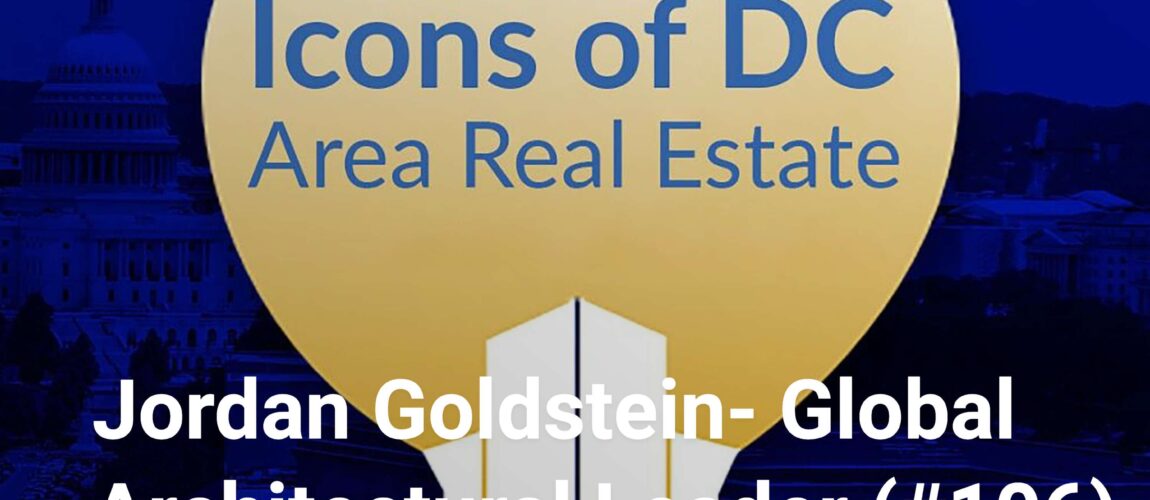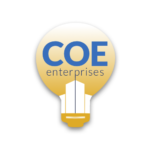

Bio
Jordan Goldstein, Co-CEO of Gensler and a member of the firm’s Board of Directors, is an award-winning architect who uses design to help clients unravel complex problems and craft relevant solutions that evolve their businesses and brands.
Throughout his 25-plus-year career, Jordan has been involved in further defining the skyline of global cities with buildings like Beijing’s twin 725-foot CP Towers and providing design vision on projects that range in scale from China’s Duke Kunshan University campus to Marriott’s new global headquarters. His projects have won national and local awards from the American Institute of Architects, International Interior Design Association, and NAIOP, among others, and his work has been featured in publications, including Architect, Interior Design, Contract, Fortune, US News & World Report, Washington Business Journal, and The Washington Post.
In addition to being recognized for his design skills, Jordan is honored for his leadership, and was recently included on the Washington Business Journal’s “Power 100” list and recognized as one of the top 25 innovators in Washington, D.C. He is a Fellow of the American Institute of Architects and the International Interior Design Association. An advocate of helping the next generation of architects prepare for tomorrow, Jordan has taught at the University of Pennsylvania, where he earned his Master in Architecture, and has been the Kea Professor at the University of Maryland, where he earned his Bachelor of Science in Architecture.
Show Notes
- The position and role at Gensler (00:04:40)
- Jordan Goldstein explains his role as the Co-CEO of Gensler and the day-to-day operations, strategizing, and industry foresight.
- Global diversity and practice areas (00:05:20)
- Jordan discusses the diversity and scale of projects across 53 offices in 33 practice areas, including emerging practices like sports and health.
- Impact of societal changes on architecture (00:07:25)
- The conversation delves into the impact of societal changes on architecture, focusing on social impact, sustainability, and community projects.
- Influences of parents and childhood experiences (00:08:55)
- Jordan shares the influences of his parents, his early interest in design, and the pivotal role of his parents in nurturing his passion for architecture.
- Interdisciplinary nature of architecture (00:13:00)
- Jordan explains his choice of architecture over engineering, highlighting its interdisciplinary nature and the fusion of art, engineering, and cultural influences.
- Experience in Rome and Japan (00:14:20)
- Jordan recounts his transformative experiences in Rome and Japan, where he gained insights into the multidisciplinary aspects and cultural influences of architecture.
- Distinctive factors of Japanese architecture (00:16:30)
- The discussion focuses on the distinctive qualities of Japanese architecture, including its ephemeral nature, traditional joinery, and the juxtaposition with Western architecture.
- Educational journey and career start (00:20:45)
- Jordan reflects on his educational journey, including six years of architecture education and his decision to join Gensler after a unique interview experience.
- Addressing Client Needs (00:24:30)
- Discussion on the purpose of design and architecture in addressing the needs of clients and societal impact.
- Collaborative Design Process (00:25:30)
- Exploring the collaborative approach in architecture and design projects, emphasizing the importance of true collaborations and diverse expertise.
- Embracing Digital Design (00:28:15)
- Transitioning to digital design in architecture firms and the potential impact of technological advancements in the industry.
- Exploring AI in Design (00:29:45)
- The use of AI in architecture and design processes, emphasizing the transformational and iterative nature of AI integration.
- Reimagining Urban Design (00:38:00)
- Discussing the human scale and urban fabric of Washington, DC, and the significance of understanding the surroundings in architectural projects.
- Olympic Bid and City Development (00:41:45)
- Exploring the impact of the Olympic bid on the master plan for the future of Washington, DC, and its potential as a catalyst for city development.
- Attracting Amazon and City Planning (00:43:45)
- The influence of the city’s master plan, including the impact on attracting companies like Amazon, and the focus on thriving neighborhoods.
- Opportunities at scale (00:44:30)
- Discussing the potential of large-scale events to bridge neighborhoods and connect communities in a meaningful way.
- Infrastructure improvements and private development (00:45:00)
- Highlighting the importance of infrastructure improvements and private development in creating habitable, prideful spaces along the water’s edge.
- Olympic bid effort (00:46:25)
- Exploring the power of the Olympic bid effort in bringing together public and private sectors for a common goal, inspiring future-focused meetings.
- Design forecast trends (00:48:10)
- Discussing the concept of “20-minute cities” and the idea of bringing live, work, and play within a 20-minute radius, as well as the potential of converting stranded assets into new experiential destinations.
- Experience multipliers (00:52:20)
- Exploring the concept of experience multipliers and how they can enhance the value of spaces, specifically in the context of sports and entertainment mixed-use districts.
- Hospitality mindset in real estate (00:55:00)
- Discussing the importance of creating surprise and delight in real estate experiences, with a focus on the hospitality mindset and its impact on customer experience.
- Regional development and master planning (00:58:30)
- Highlighting the role of design in enabling further connectivity and success in regional development, with a specific focus on the Inner Harbor master plan in Baltimore.
- Repurposing existing buildings (01:01:30)
- Exploring the potential of repurposing existing brutalist buildings, with a case study of transforming a classic brutalist grid building into a more accessible and inviting space.
- The Wharf redevelopment (01:03:47)
- Discussion on the need for creative thinking and potential public financing for redevelopment.
- Architecture of optimism (01:07:50)
- Exploration of the concept of optimism in architecture and an example of a school design in Miami.
- Reimagining Washington sites (01:11:55)
- Brainstorming on potential redevelopment of sites in Washington, including the Kennedy Center and the Anacostia riverfront.
- Revitalizing downtown infrastructure (01:16:00)
- Focus on physical improvements to downtown Washington’s infrastructure and the importance of streetscape design.
- Rethinking Urban Mobility (01:18:00)
- Exploration of future mobility and the potential impact on streetscapes and outdoor spaces in cities.
- Human-scale cities (01:23:30)
- Discussion on the shift towards pedestrian-friendly and human-scale cities, influenced by the experiences in Munich, Barcelona, and Mexico City.
- The impact of societal changes on architecture (01:27:00)
- Discussion on the impact of the pandemic on urban areas and the potential for radical changes in city planning.
- Observing user experience in design (01:27:30)
- Exploring the importance of observing user behavior and experiences to inform design decisions.
- Creating value through observation (01:28:15)
- Highlighting the value of observing user behavior to identify pain points and concentrate resources effectively.
- Designing for user behavior (01:30:00)
- Emphasizing the importance of pilot projects and observing user behavior for first principles thinking in design.
- Urban planning strategies (01:31:15)
- Exploring architectural and planning strategies to facilitate social activities in urban areas.
- Office as a destination (01:31:45)
- Discussing the concept of making office spaces a destination rather than an obligation.
- Client relationships and project opportunities (01:32:30)
- Highlighting the significance of client relationships and repeat business in seeking out new project opportunities.
- Influence of ideas on design philosophy (01:33:30)
- Exploring the concepts of anomalies, fractals, and taste in design and their influence on design philosophy.
- Simplicity in design (01:34:40)
- Emphasizing the value of simplicity and editing in design work.
- Creating positive experiences through design (01:35:30)
- Discussing how design can create positive experiences and good taste in architecture.
- Adaptability in building design (01:40:10)
- Exploring the adaptability of buildings to different environments and experiences.
- Inspiration and creativity in architecture (01:44:50)
- Discussing sources of inspiration and creativity in architecture, including cultural diversity and personal interests.
- Hiring criteria for architects (01:46:30)
- Exploring the qualities sought in architects, including collaboration, curiosity, and a willingness to learn.
- Coaching and mentoring in the workplace (01:47:40)
- Highlighting the importance of coaching, mentoring, and learning opportunities in the workplace culture.
- Managing real estate cycles (01:49:00)
- Discussing how diversification of work helps in managing the ups and downs of real estate cycles.
- The Duke Kunshan University Project (01:50:40)
- Jordan discusses the successful design and construction of a new campus for Duke Kunshan University in China.
- The Shanghai Tower Project (01:52:20)
- Jordan talks about the design and construction of the Shanghai Tower, the second tallest building in the world and the largest in Asia.
- The Growth of the Sports Practice (01:53:00)
- Jordan discusses the surprising growth and success of Gensler’s sports practice, including the opening of a new location in Kansas City.
- Family, Community, and Giving Back (01:55:25)
- Jordan shares his philosophy on family, business, and giving back to the community, including Gensler’s mentor program with HBCUs.
- Embracing Off-Ramps (01:58:30)
- Jordan advises embracing career opportunities and off-ramps, learning from failures, and focusing forward.
- Focus Forward (01:59:40)
- Jordan emphasizes the importance of looking to the future and staying focused amidst change and disruption in the architectural and design profession.

